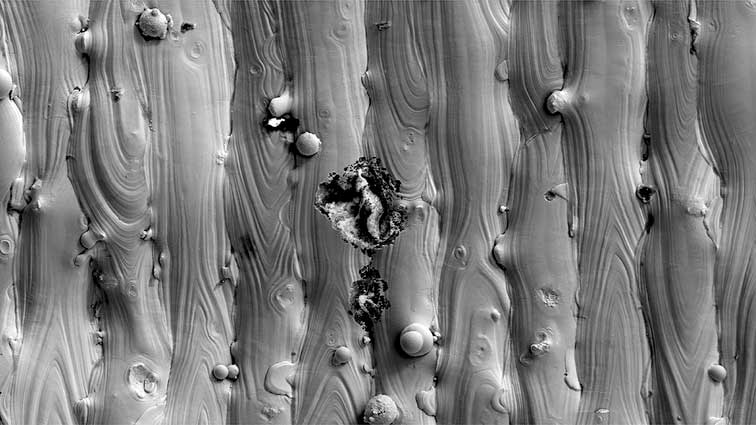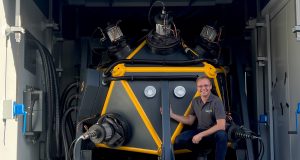LLNL researchers reveal the causes of pitting corrosion in 3D-printed 316L stainless steel used in seawater in Nature Communications. Their discovery that slag particles initiate corrosion marks a breakthrough in materials research and offers new approaches to improve corrosion resistance.
316L stainless steel, known for its excellent combination of mechanical strength and corrosion resistance, is widely used in the maritime industry. However, research by the LLNL team has revealed that the laser powder bed fusion (LPBF) 3D printing process produces tiny particles, known as ‘slags’, which can initiate pitting corrosion on the metal surface. These slags, which are produced by deoxidizing agents such as manganese and silicon, stick to the surface of the metal, unlike traditional 316L stainless steel production.
“Pitting corrosion is extremely difficult to understand due to its stochastic nature, but we determined the material characteristics that cause or initiate this type of corrosion,” said lead author and LLNL staff scientist Shohini Sen-Britain. “While our slags looked different than what had been observed in conventionally manufactured materials, we hypothesized that they could be a cause of pitting corrosion in 316L. We confirmed this by taking advantage of the impressive materials characterization suite and modeling capabilities we have at LLNL, where we were able to prove without a doubt that slags were the cause. This was extremely rewarding.”
Compared to conventional manufacturing, where slags are usually removed, additive manufacturing does not offer the same post-processing capabilities without negating the benefits of 3D printing. By using techniques such as plasma-focused ion beam milling, transmission electron microscopy and X-ray photoelectron spectroscopy, the team was able to reveal the role of slags in the corrosion process in a simulated marine environment. The slags create discontinuities that allow the chloride-rich water to penetrate the steel and cause damage.
“We wanted to do a deep-dive microscopy study to figure out what could potentially be responsible for corrosion when it does happen in these materials, and if that’s the case, then there may be additional ways of improving them by avoiding that particular agent,” said principal investigator Brandon Wood. “There is a secondary phase that’s formed that contains manganese — these slags — that appeared to be what was most responsible. Our team did some additional detailed microscopy looking at the neighborhood of those slags, and sure enough, we were able to show that in that neighborhood you have enhancement — a secondary indicator that this is probably the dominant agent.”
To get to the bottom of the interactions, the research team isolated small samples of 3D-printed stainless steel and analyzed their chemistry and structure at the atomic level. These detailed investigations made it possible to unravel the mechanisms behind slag formation and its relationship to pitting corrosion.
Thomas Voisin said: “When we 3D print the material, it’s better for mechanical properties, and from our research, we also understand that it’s better for corrosion as well. The surface oxide that forms during the process is developing at high temperature, and that also gives it many different properties. What’s exciting is understanding the reason why the material corrodes, why it’s better than other techniques and the science behind it. It is confirming, again and again, that we can use laser powder bed fusion AM to improve our material properties, way beyond anything we can do with other techniques.”
Understanding the causes of pitting corrosion paves the way for future improvements in the performance and longevity of 3D printed 316L stainless steel. By adjusting the composition of the powder material, manganese and silicon could be reduced or eliminated to limit or prevent the formation of slag. Furthermore, optimizing the laser processing parameters could help prevent the formation of slag on the surface.
“I think there’s a real pathway to actually co-designing these alloy compositions and the way they are processed to make them even more corrosion resistant,” Wood said. “The long-term vision is to go back to a prediction-validation feedback cycle. We have an idea that the slags are problematic; can we next leverage our composition models and process models to then figure out how to change our base formulations, such that what we get is basically an inverse design problem. We know what we want, now we just have to figure out how to get there.”
Subscribe to our Newsletter
3DPResso is a weekly newsletter that links to the most exciting global stories from the 3D printing and additive manufacturing industry.























